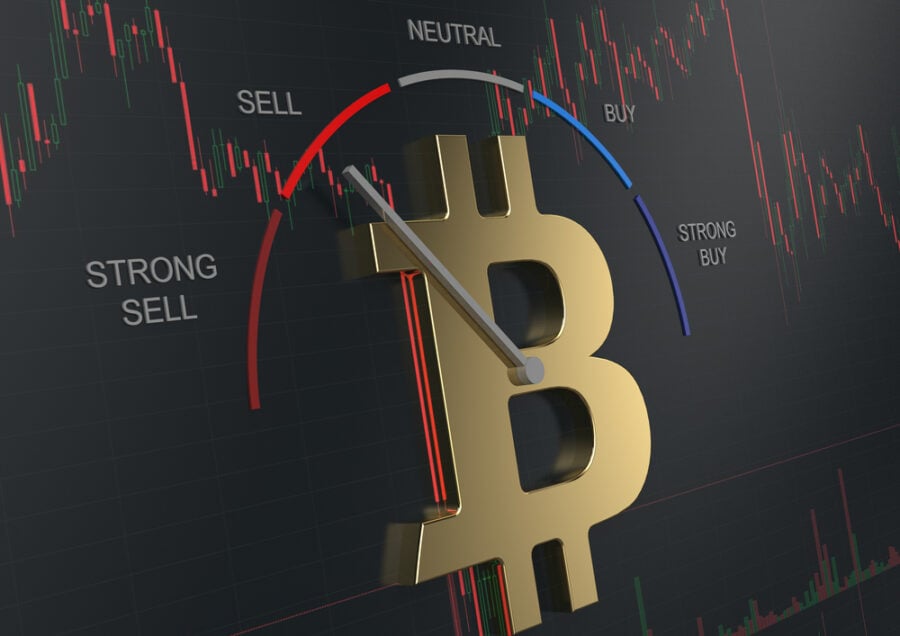In the past few days, the Fear and Greed index rose from 10, extreme fear to 16, less so extreme. Simultaneously, Bitcoin rose from the $29k range to the $32K level at one point, before relinquishing some gains back to mid $31k levels but it’s very volatile, now.
If you’re a Bitcoin or crypto investor, you’re likely going through a rollercoaster ride, of whether to buy, sell, or go all in, or all out.
And to understand all of these emotions, we need to understand the bear market we’re in right now.
Current bears
Bitcoin lost 50% of the values it registered last November when it was nearing the $70k mark.
What is different today is that bear markets, opposite to bull ones, at least, when it comes to cryptos, particularly Bitcoins, is that they are known for having sharp rallies. While the past 48 hours are not considered sharp, they do represent a rally, and more of those could be expected, 6 months into a bear season, as the bulls awaken from their hibernation.
These may be short 48-hour spikes or could last weeks, just like the ones that gradually pushed Bitcoin to $20k levels in December 2017, only to see the crypto fall in the 3k range a year later.
And these rallies begin what is known as FOMO.
FOMO (Fear Of Missing Out)
Rallies are like magnets for many investors who start experiencing “FOMO”, a modern-day syndrome in line with the crypto-times. Institutions and professionals use “FOMO” to Do whatever it takes to buy the crypto, even if it means borrowing heavily, selling assets, or mortgaging property to get into the craze for fear of, well, missing out. History has shown that such actions are accompanied by disastrous repercussions, as the crypto game is a long-term one, not a quick get rich money-making scheme.
Data, not FOMO, is key
CoinDesk asked professionals to recommend their most reliable data-fueled indicators that are simple enough for beginner investors, and that keep FOMO at bay.
Linear Regression
The first is the linear regression channel, which is a technical indicator having 3 lines showing the fluctuating price of an asset.
The median line depicts the last 100 price points. The lower line shows the support level from where the price usually bounces up, while the upper bound represents a point of resistance that the price has a hard time breaking.
When the price touches the lower bound, it usually signals a buy, and when it reaches the upper bound, it’s an opportunity to sell.

Fear and Greed
The Fear and Greed Index measures crypto’s investment sentiment. On a scale of 1 and 100, a low number reflects fear or extreme fear, and a high number symbolizes greed or extreme greed.
Fear means investors and retail owners of cryptos are selling, causing prices to fall. On the other side of the coin, when the index is green, it signals people are greedily buying, driving prices higher.

Simple and exponential moving averages
Moving averages are calculated from a crypto’s past prices and the most-used ones are 50-day, 100-day and 200-day averages.
These show overall trends over extended periods of time by smoothing out the short-term fluctuations in price.
If an asset hovers over its moving average price, it is in an uptrend. If below the moving average, it’s a downward trend and the moving average behaves as resistance.

Torschlusspanik
When prices crumble, some people will be willing to hang on for dear life (or HODL) but many others will decide to exit the market altogether. It’s the opposite of FOMO, a market phenomenon that goes by the German name Torschlusspanik ort the fear of the closing of a door.
A recent occurrence of this is what took place with Luna, the sister cryptocurrency of stablecoin TerraUSD, known as UST. Around a month ago, it was the 4th most popular cryptocurrency. From its algorithmic $1 peg, UST started trading around $0.40 and Luna plunged. It went from $77.46 one week to $0.013 a week later. Oops!








